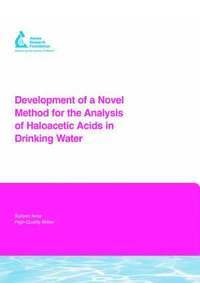
Liknande böcker
Development of a Novel Method for the Analysis of Haloacetic Acids in Drinking Water : Awwarf Report 91013f
Bok av Li Zhang
Raymond M. Hozalski
Li Zhang
The main objective of this research was to develop a new approach for HAA analysis that was accurate, reproducible, sufficiently sensitive, and relatively safe and simple to perform. This method involved the use a CE ion analyzer for separation and detection of HAAs. Preliminary results from our laboratory using distilled and deionized water spiked with HAAs indicated that this approach was capable of separating and detecting all nine chlorinated and brominated HAAs. The method detection limit (MDL) for monochloroacetic acid measured in our laboratory was 32 ppb using a bubble cell without any sample pretreatment (i.e. direct aqueous sample injection). Given this unacceptably high MDL, more work was needed to fully develop and test the CE-based method especially with regard to improving method sensitivity. Originally published by AwwaRF for its subscribers in 2004. This publication can also be purchased and downloaded via Pay Per View on Water Intelligence Online - click on the Pay Per View icon below
Visa pris inkl. frakt Inkl. frakt
Development of a Novel Method for the Analysis of Haloacetic Acids in Drinking Water
2080 kr
Finns i lager







